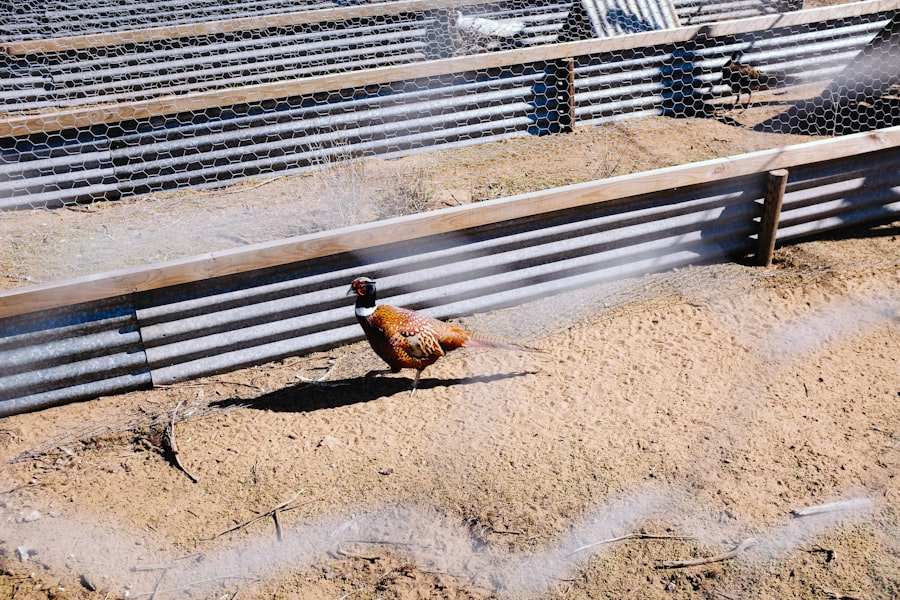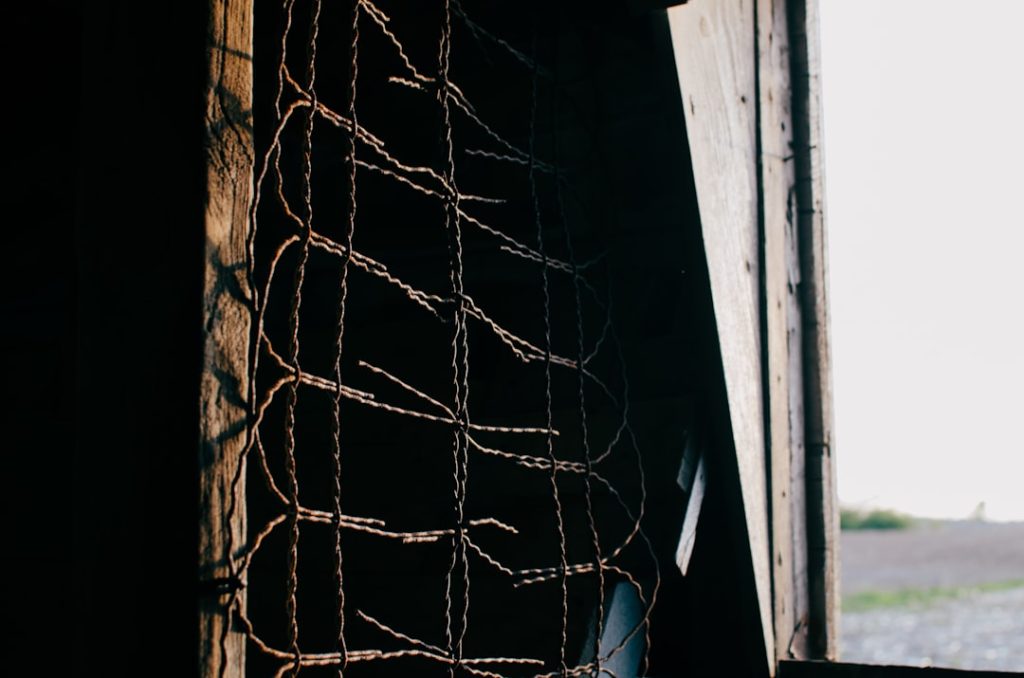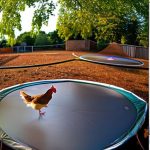Protecting chickens from predators requires a comprehensive understanding of the potential threats. Various animals, including foxes, raccoons, coyotes, and birds of prey, may target chickens as a food source. Each predator species has unique behaviors and habits, necessitating tailored prevention strategies.
Identifying the specific predators in a given area is crucial for implementing effective protection measures. Predators pose significant risks to chicken flocks beyond physical harm. The presence of predators can induce stress and anxiety in chickens, potentially impacting their overall health and egg production.
Recognizing these potential consequences underscores the importance of implementing robust deterrent measures to safeguard the flock’s well-being and productivity. To develop an effective predator protection plan, chicken keepers must consider the diverse range of threats, understand predator behavior, and implement appropriate preventive measures. This approach helps ensure the safety and welfare of the chickens while maintaining optimal flock health and productivity.
Table of Contents
- 1 Creating Physical Barriers
- 2 Using Natural Deterrents
- 3 Implementing Visual Deterrents
- 4 Employing Sound Deterrents
- 5 Establishing a Separate Area for Chickens
- 6 Seeking Professional Advice
- 7 FAQs
- 7.1 What are some humane ways to keep chickens out of flower beds?
- 7.2 Why is it important to keep chickens out of flower beds?
- 7.3 Are there any non-harmful methods to deter chickens from entering flower beds?
- 7.4 What are some potential risks of using harmful methods to keep chickens out of flower beds?
- 7.5 How can I create a chicken-friendly area in my yard to keep them out of flower beds?
Key Takeaways
- Understanding the Problem: Recognize the specific threats and challenges posed by predators to chickens.
- Creating Physical Barriers: Install fences, wire mesh, and hardware cloth to physically prevent predators from accessing the chicken coop.
- Using Natural Deterrents: Utilize natural elements such as thorny bushes, predator urine, and predator decoys to deter potential threats.
- Implementing Visual Deterrents: Install scarecrows, reflective objects, and predator silhouettes to visually deter predators from approaching the coop.
- Employing Sound Deterrents: Use motion-activated alarms, radios, and predator calls to scare off potential threats.
- Establishing a Separate Area for Chickens: Create a secure and enclosed area for chickens to roam during the day, minimizing their exposure to predators.
- Seeking Professional Advice: Consult with local wildlife experts or professional pest control services for tailored advice and solutions to protect chickens from predators.
Creating Physical Barriers
Installing Sturdy Fencing and Roofing
One of the most effective ways to safeguard your chickens from predators is by creating physical barriers around their coop and run. This can include installing sturdy fencing that is buried at least a foot into the ground to prevent digging from predators like foxes and raccoons. Additionally, adding a roof or cover to the run can help deter birds of prey from swooping in and snatching your chickens.
Maintaining and Reinforcing Barriers
It’s essential to regularly inspect and maintain these barriers to ensure they remain secure and intact. Another physical barrier that can be effective is using hardware cloth instead of chicken wire for the coop and run. Hardware cloth is much stronger and more durable, making it harder for predators to break through.
Securing Entrances and Doors
Additionally, consider adding predator-proof latches and locks to all coop doors and entrances to further secure the area. By creating strong physical barriers, you can significantly reduce the risk of predators gaining access to your chickens.
Using Natural Deterrents
In addition to physical barriers, natural deterrents can also be effective in keeping predators away from your chickens. One common natural deterrent is the use of predator urine or scent markers around the perimeter of the coop and run. This can create the illusion that a larger predator is in the area, causing potential threats to stay away.
Additionally, planting thorny bushes or shrubs around the coop can create a natural barrier that deters predators from getting too close. Another natural deterrent is the presence of guard animals such as dogs or geese. These animals can help protect your chickens by alerting you to potential threats and even warding off predators with their presence.
However, it’s important to properly train and socialize these animals to ensure they are effective in their role as protectors. By utilizing natural deterrents, you can add an extra layer of defense against potential predators.
Implementing Visual Deterrents
Visual deterrents can also be effective in deterring predators from targeting your chickens. One common visual deterrent is the use of scarecrows or predator decoys placed strategically around the coop and run. These decoys can create the illusion of a larger predator in the area, causing potential threats to think twice before approaching.
Additionally, reflective objects such as CDs or mirrors can be hung around the area to create flashes of light that may startle and deter predators. Another visual deterrent is the use of motion-activated lights or sprinkler systems. These devices can startle predators with sudden bursts of light or water, making them think twice about approaching your chickens.
Additionally, consider keeping the area around the coop and run well-lit at night to discourage nocturnal predators from getting too close. By implementing visual deterrents, you can create an environment that is less appealing to potential threats.
Employing Sound Deterrents
Sound deterrents can also be effective in keeping predators away from your chickens. One common sound deterrent is the use of motion-activated alarms or noise-making devices that emit loud sounds when triggered by movement. These sudden noises can startle and deter predators from approaching the coop and run.
Additionally, consider playing recordings of predator calls or distress calls of other animals to create the illusion of danger in the area. Another sound deterrent is the use of wind chimes or bells around the perimeter of the coop and run. The sound of these objects can create a constant noise that may deter potential threats from getting too close.
Additionally, consider playing music or radio at a low volume near the coop to create a constant background noise that may discourage predators from approaching. By employing sound deterrents, you can create an environment that is less inviting to potential threats.
Establishing a Separate Area for Chickens

Creating a Safe Roaming Area
Establishing a separate area for your chickens to roam during the day is an effective strategy for protecting them from predators. This can include creating a chicken tractor or portable enclosure that can be moved around your property to provide fresh grazing areas for your flock while keeping them safe from potential threats.
Securing the Roaming Area
Additionally, consider using electric netting or fencing to create a secure area for your chickens to roam without the risk of predators gaining access. This will provide an extra layer of protection for your flock.
Providing Hiding Spots and Shelters
Furthermore, consider providing hiding spots and shelters within the chicken’s roaming area where they can seek refuge if they sense danger. This can include dense shrubbery or small shelters that provide protection from aerial predators.
By establishing a separate area for your chickens, you can provide them with a safe environment to roam while minimizing their exposure to potential threats.
Seeking Professional Advice
If you’re struggling to protect your chickens from predators despite implementing various deterrents, it may be beneficial to seek professional advice. A local wildlife expert or animal control officer may be able to provide valuable insights and recommendations for dealing with specific predator threats in your area. Additionally, consider consulting with experienced poultry keepers or joining local poultry groups or forums to gather advice and tips from others who have successfully dealt with predator issues.
Furthermore, consider reaching out to a professional contractor or predator control specialist who can assess your coop and run for potential vulnerabilities and provide recommendations for strengthening security measures. They may also be able to offer specialized solutions such as installing predator-proofing measures or advanced deterrent systems that are tailored to your specific predator threats. By seeking professional advice, you can gain valuable expertise and guidance in effectively protecting your chickens from predators.
In conclusion, protecting your chickens from predators requires a multi-faceted approach that includes understanding the nature of the problem, creating physical barriers, using natural and visual deterrents, employing sound deterrents, establishing a separate area for chickens, and seeking professional advice when needed. By implementing these strategies, you can create a safe and secure environment for your flock while minimizing the risk of predator attacks. It’s important to regularly assess and update your predator protection measures to ensure they remain effective in deterring potential threats.
With careful planning and proactive measures, you can successfully safeguard your chickens from predators and provide them with a peaceful and secure living environment.
If you’re looking for more information on keeping chickens, you might be interested in an article on how many chickens you need for a family of 4. This article provides helpful insights into the practicalities of keeping chickens for a small family and can help you make informed decisions about your flock.
FAQs
What are some humane ways to keep chickens out of flower beds?
Some humane ways to keep chickens out of flower beds include using physical barriers such as fences or chicken wire, using natural deterrents such as citrus peels or coffee grounds, and providing alternative areas for the chickens to forage and scratch.
Why is it important to keep chickens out of flower beds?
Keeping chickens out of flower beds is important to protect the plants and flowers from being damaged or destroyed by the chickens’ scratching and pecking behavior. It also helps maintain a tidy and well-maintained garden or landscape.
Are there any non-harmful methods to deter chickens from entering flower beds?
Yes, there are several non-harmful methods to deter chickens from entering flower beds. These include using natural deterrents such as citrus peels, coffee grounds, or vinegar, as well as providing alternative areas for the chickens to forage and scratch.
What are some potential risks of using harmful methods to keep chickens out of flower beds?
Using harmful methods to keep chickens out of flower beds, such as chemical deterrents or physical harm, can pose risks to the chickens’ health and well-being. It can also have negative effects on the environment and other wildlife in the area.
How can I create a chicken-friendly area in my yard to keep them out of flower beds?
You can create a chicken-friendly area in your yard by providing a designated space for the chickens to forage and scratch, such as a chicken run or a designated garden bed with chicken-friendly plants. Additionally, providing enrichment activities and toys for the chickens can help keep them occupied and less likely to venture into flower beds.
Meet Walter, the feathered-friend fanatic of Florida! Nestled in the sunshine state, Walter struts through life with his feathered companions, clucking his way to happiness. With a coop that’s fancier than a five-star hotel, he’s the Don Juan of the chicken world. When he’s not teaching his hens to do the cha-cha, you’ll find him in a heated debate with his prized rooster, Sir Clucks-a-Lot. Walter’s poultry passion is no yolk; he’s the sunny-side-up guy you never knew you needed in your flock of friends!







